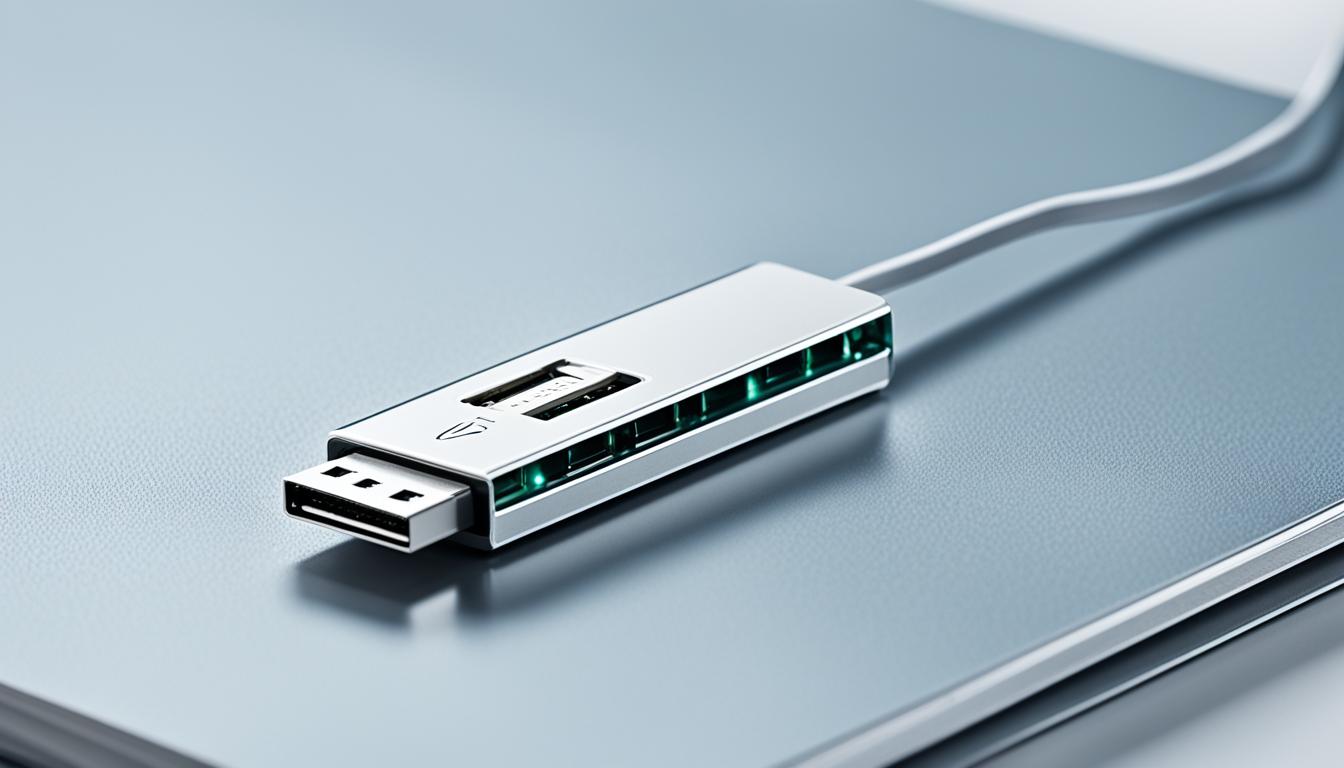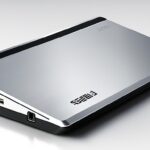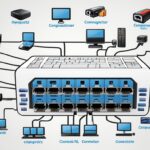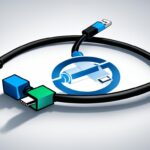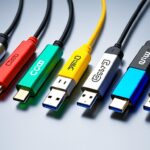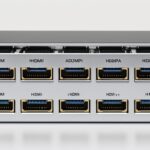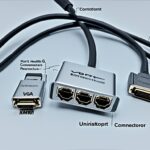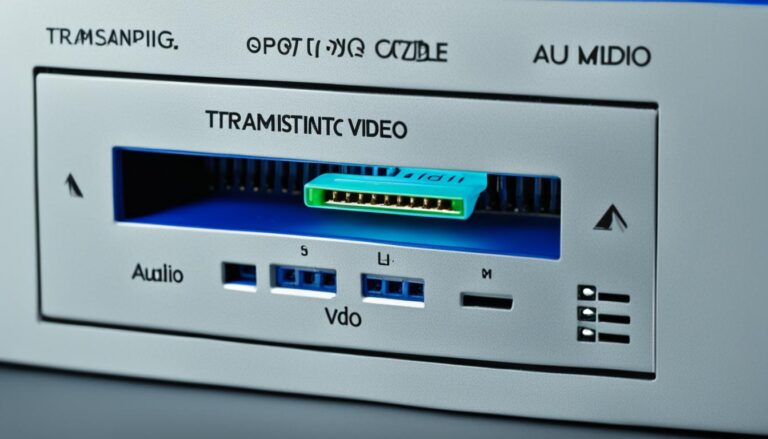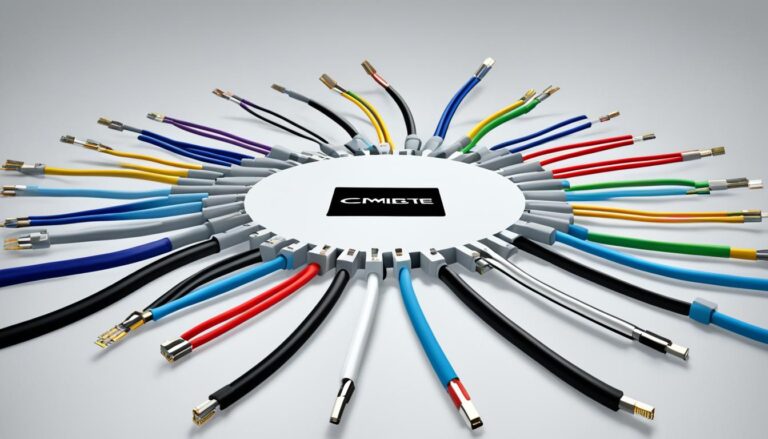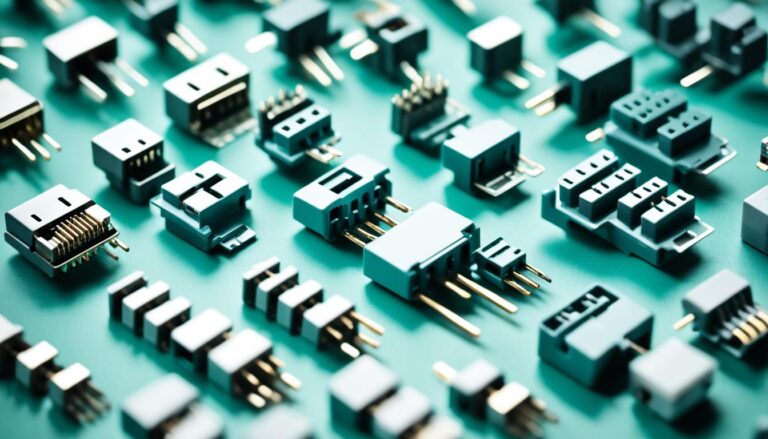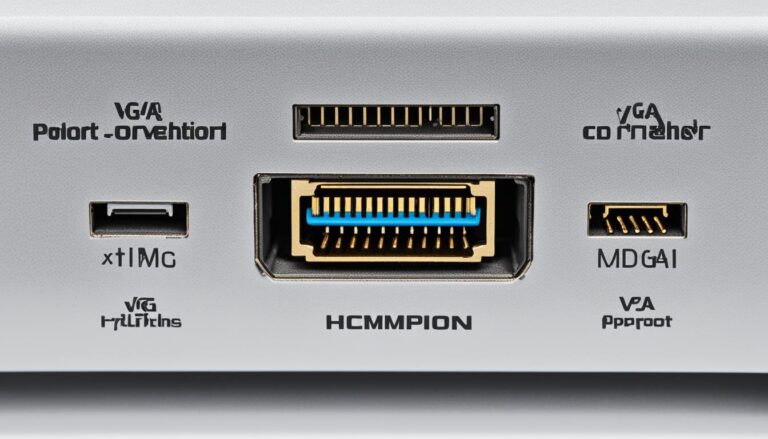The notebook USB port is key for connecting different devices. It links smartphones, computers, and more. USB means Universal Serial Bus. It’s a set standard for digital data chats over short distances. USB ports not only move digital data but also power devices through their cables.
USB ports come in various types, such as USB-A, USB-B, micro USB, and USB Type C. You’ll find them on many devices, like network adapters and printers. Using a USB hub, you can hook many devices to one USB port. These devices work with various USB versions, including the latest, USB 3.1. A reliable notebook USB port is vital for good productivity.
Understanding USB Ports and Cables
USB ports are cable connection interfaces. They let devices connect and share digital data. You find them on smartphones, computers, and consumer electronics. They support wired and wireless USB, but only the wired ones need ports and cables.
To connect devices, plug a USB cable into their ports. But don’t plug both ends into one device, it could cause damage. You can plug in USB cables whether devices are on or off. Still, it’s best to eject devices safely before unplugging them.
A USB hub lets you connect multiple devices. It uses one port on your device but adds more for others.
Types of USB Ports
USB ports come in several types, including USB-A, USB-B, micro USB, and USB Type C. These make sure different devices can work together. USB-A is on computers, while micro USB is often on smartphones.
The Importance of USB Cables
USB cables are vital for connection and data transfer. They also provide power. They come in different lengths and are made with several wires. These cables are shielded against signal loss and interference.
USB cables enable devices to communicate. They allow for efficient data sharing and power supply.
Using the right USB cable is important for performance and compatibility. USB cables support various USB versions, with USB 3.1 being the latest. Match the cable to the devices and ports for faster data transfer.
USB ports and cables are essential in our daily lives. They help us connect to devices, sharing data and power. This technology has changed how we interact with our devices.
The Evolution of USB Technology
USB Standard Evolution
| USB Version | Data Transfer Speed | Year of Release |
|---|---|---|
| USB 1.0 | 1.5 Mbps | 1996 |
| USB 2.0 | 480 Mbps | 2000 |
| USB 3.0 | 5 Gbps | 2008 |
| USB 3.1 | 10 Gbps | 2013 |
| USB 3.2 | 20 Gbps | 2017 |
USB tech has grown to be the top way to connect devices to computers. Before USB, connecting was harder with serial and parallel ports. USB came from the work of IBM, Intel, and Microsoft. It made connecting devices easier.
The iMac from Apple in 1998, which only had USB ports, boosted USB’s popularity.
USB tech allows for quicker data transfers than old connections. It’s been improved over time for faster use. The USB standard is looked after by the USB Implementers Forum (USB-IF). This ensures devices work well together.
The Evolution of USB Technology
USB technology has changed a lot over time. It’s now the main way we connect gadgets to computers. Before USB, there were many ways to connect, like serial and parallel ports. Companies like IBM, Intel, and Microsoft made USB to simplify connecting devices. The USB standard started in the mid-1990s. But, people didn’t use it much at first.
Then, in 1998, Apple Inc. launched the iMac, which only used USB. This made USB very popular. Since then, USB has become essential for connecting devices like printers and keyboards. USB is better than old connections. It moves data faster, making things work smoother. This is great for big files or streaming videos.
USB has gotten better over time, with new versions like USB 3.0 and USB 3.2. USB 3.0, or SuperSpeed USB, can transfer data up to 5 Gbps. USB 3.1 doubles that speed to 10 Gbps. The latest, USB 3.2, can go up to 20 Gbps. So, you can move data quickly and easily.
The USB Implementers Forum (USB-IF) now looks after the USB standard. They make sure USB things work together, no matter who makes them. This also helps bring in new improvements smoothly into USB.
Advantages of USB Technology
- Fast data transfer speeds
- Standardization and compatibility
- Wide range of peripheral devices
- Hot swapping capabilities
- Power supply through the USB cable
USB technology has changed how we connect devices to computers. With its speed, compatibility, and power features, USB is the best choice for many gadgets. As tech keeps improving, USB will too, offering faster data transfers.
| USB Standard | Data Transfer Speed |
|---|---|
| USB 1.1 | Up to 12 Mbps |
| USB 2.0 | Up to 480 Mbps |
| USB 3.0 (USB 3.1 Gen 1) | Up to 5 Gbps |
| USB 3.1 (USB 3.1 Gen 2) | Up to 10 Gbps |
| USB 3.2 | Up to 20 Gbps |
How USB Cables Work
USB cables are vital for any device that needs a USB port to connect. These wires link devices to computers or other electronics. They help with both powering devices and moving data.
A USB cable has wires for power and wires for data. This lets the cable send power and data between the computer and devices. The USB port connects these devices smoothly.
The USB port has metal strips for power and data. The number of strips varies with the USB version. For instance, USB 3.0 has more strips for faster data transfer.
USB cables allow for hot swapping. This means you can plug and unplug devices without restarting the computer. It makes it easy to switch devices without interrupting your work.
USB also moves power using direct current (DC). So, USB cables can power devices even without data transfer. This makes them useful in many situations.
USB connections are designed to be standard. This ensures devices can easily connect. The connections are also shielded to protect the signal from damage or interference.
Knowing how USB cables work helps you get the most out of USB technology. USB cables are key for linking smartphones to computers or moving data. They ensure devices connect well and data moves efficiently.
Conclusion
The notebook USB port is key for linking various devices and moving digital data. Over the years, USB technology has grown. It’s now the go-to method for connecting external devices to computers. This boosts productivity significantly.
With USB cables, power and data move smoothly between devices. This ensures strong and efficient links through the notebook USB port. Knowing about different USB ports and cables helps users get the most from this tech.
As USB tech gets better, offering quicker data transfer and better performance, the USB port on notebooks stays essential. It guarantees easy connectivity and improves productivity. By adopting USB technology, users can stay linked, move data easily, and improve their device’s effectiveness.
FAQ
What is the role of the notebook USB port in connectivity?
The notebook USB port is crucial for connecting devices like smartphones and computers. It allows for data sharing and powers devices that need it.
What is USB and what does it stand for?
USB means Universal Serial Bus. It’s a standard for transferring digital data over short distances. It connects and transfers data across various USB devices.
What types of USB ports are available?
Various USB ports exist, such as USB-A, USB-B, micro USB, and USB Type C. You’ll find them on devices like modems, printers, and USB drives.
Can I connect multiple devices to one USB port?
Yes, by using a USB hub, multiple devices can connect to a single port. This expands your connection options.
What is the latest version of the USB standard?
USB 3.1 is the newest version. It’s faster and performs better than older versions.
How has USB technology evolved over the years?
USB has become the go-to for connecting devices to computers. It was made to simplify these connections. Versions like USB 3.0, 3.1, and 3.2 offer quick data transfers.
How do USB cables work?
USB cables have wires for data and power. They connect computers and peripherals. You can plug them in whether the devices are on or off.
Can I safely unplug USB devices without ejecting them?
You can unplug USB devices directly, but it’s safer to eject them first. This helps avoid data or device damage.
Who established and maintains the USB standard?
The USB Implementers Forum (USB-IF) sets and upholds the USB standard. They ensure it’s consistently applied across devices.
